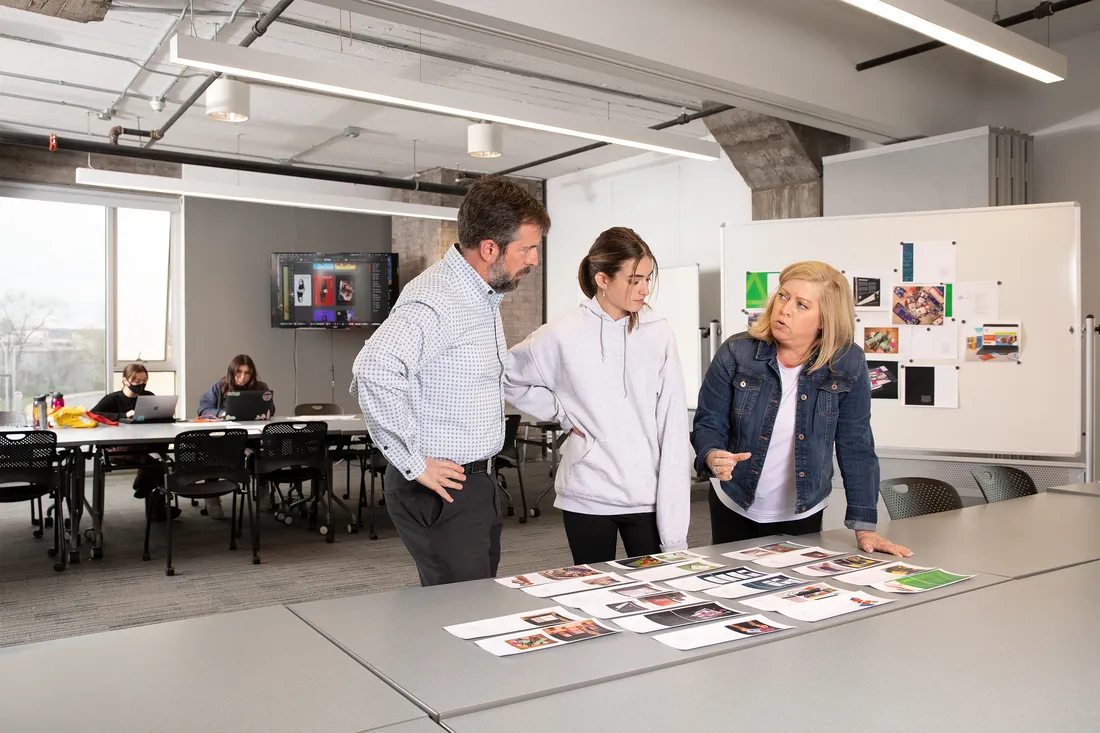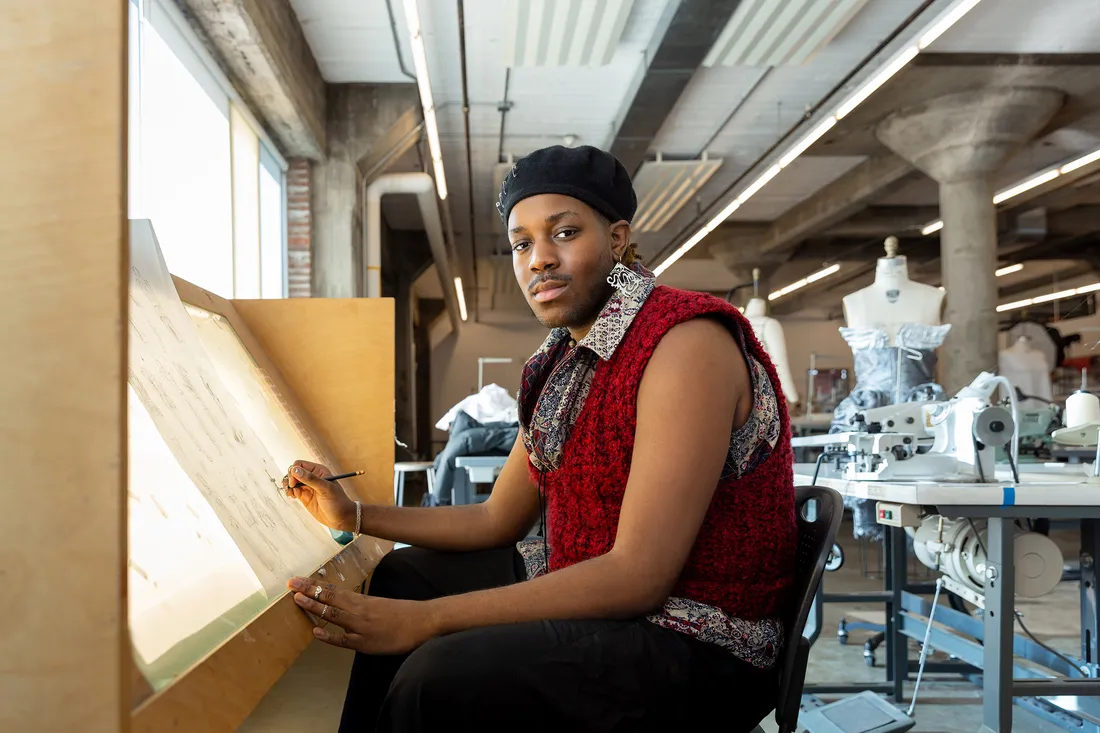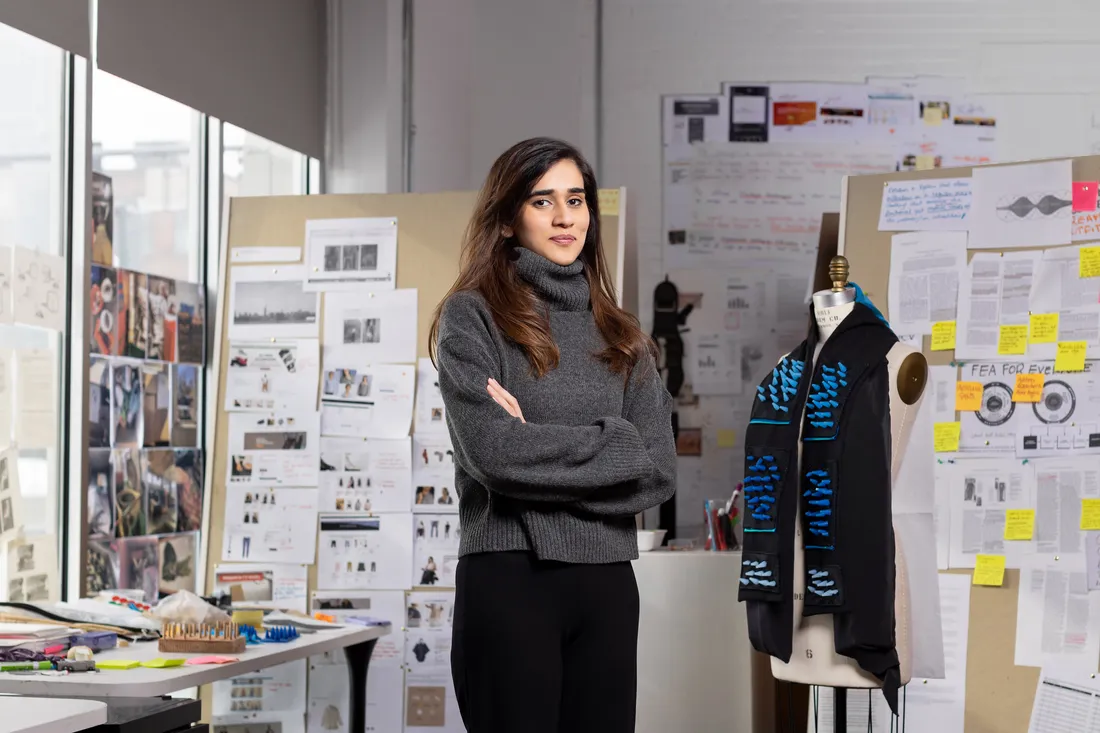
Design student Rabia Razzaq G’23 stands next to the prototype of a weighted sensory scarf that she is developing. She collaborated with InclusiveU student Andrew Dingel ’22 on the idea of creating a scarf that would help ease anxiety.
As part of the inclusive entrepreneurship and design course called Intelligence++, design student Rabia Razzaq G’23 spent time last year with Andrew Dingel ’22, a student who has autism. The idea was to learn about his daily routine, interests and obstacles he encounters—and come up with ideas for a product that could enhance his quality of life.
At a local pet shop, Dingel—who has a passion for animals, especially amphibians and reptiles—introduced Razzaq to a ball python. Dingel, who has anxiety and excess energy, noted how interacting with the docile snake calmed him because of the sensation it creates, likening the experience to using a weighted blanket, which can provide a hugging-like feeling. “Weighted blankets have helped me, but it’s hard to take them into the world,” Dingel says.
With this in mind, Razzaq and Dingel collaborated on the idea of easing anxiety through the comfort of an innovative weighted scarf. The prototype embodies the goal of Intelligence++, which brings student designers and students with disabilities together to develop unique devices, products and services for those with disabilities. Open to students from across Syracuse University, the two-semester course is supported by internationally renowned designer Gianfranco Zaccai ’70, H’09 and the Zaccai Foundation for Augmented Intelligence. It combines interdisciplinary teamwork with a focus on design concepts, entrepreneurship and understanding disability, making it the only course of its kind in the nation.
Interdisciplinary Insights
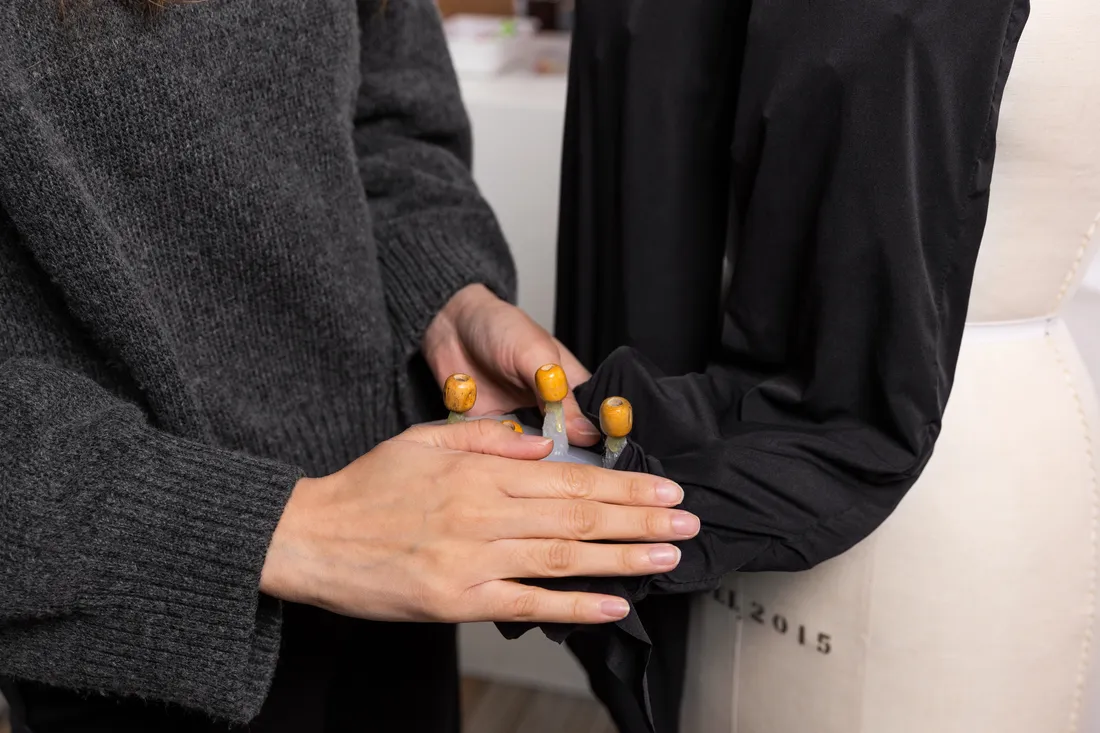
The scarf features a matrix of fidgets and spinners, which can be manipulated during anxious moments. They can be discreetly accessed through a hand pocket or worn so they’re visible as an expressive fashion statement.
One of the co-teachers is Beth Myers, executive director of the School of Education’s Lawrence B. Taishoff Center for Inclusive Higher Education, which hosts InclusiveU, a program for college students with intellectual and developmental disabilities. Myers sees the collaboration as an opportunity to work with students from different disciplines and also personally learn about design and entrepreneurship. “I’m teaching students who don’t normally get disability content in their courses, so infusing disability studies into their curriculum is fun for me,” says Myers, the Lawrence B. Taishoff Assistant Professor of Inclusive Education. “These students are changed from the work they’re doing, and they’ll come out of here as better people. They will think about disability and accessibility in different ways in their future work or just in their life—and that’s important to me.”
College of Visual and Performing Arts design professor Don Carr launched the course with Myers and Linda Dickerson Hartsock, founder of Blackstone LaunchPad at Syracuse University and advisor for strategic initiatives. At the outset, Carr emphasizes fun team-building events so students will gain one another’s trust and be willing to share ideas. The course, now in its third year, culminates with the Intelligence++ Showcase Competition, where students pitch their prototypes and prizes are awarded to the top entries. “It’s a great class—a unique learning opportunity,” Carr says. “Design is an iterative process. With each prototype, you make leaps, learn and correct and do the next one.”
A Prototype With Multiple Options
Razzaq’s scarf prototype—known as “Tailored Relief”—won the 2022 competition, earning a $5,000 prize and an exhibition inviting guests to provide feedback. With support from staff and faculty across campus, she has continued to refine the scarf and is pursuing an intellectual property patent with assistance from the College of Law’s Innovation Law Center.
Design is an iterative process. With each prototype, you make leaps, learn and correct and do the next one.
Professor Don Carr
Razzaq describes the scarf as a modular system design that wearers can adapt to different circumstances and how they want to present themselves—whether wearing it discreetly or as a visually expressive fashion statement. It features a pocket in the neck area for a hot or cold gel pad to help the wearer relax and hand pockets that allow access to a matrix of fidgets and spinners, which add weight and can be manipulated during anxious moments. “You’re getting relief from the scarf, and it’s tailored for your needs and requirements,” Razzaq says. “Do you want the fidgets showing or not, the gel pad or not? The product is how the user wants it to be.”
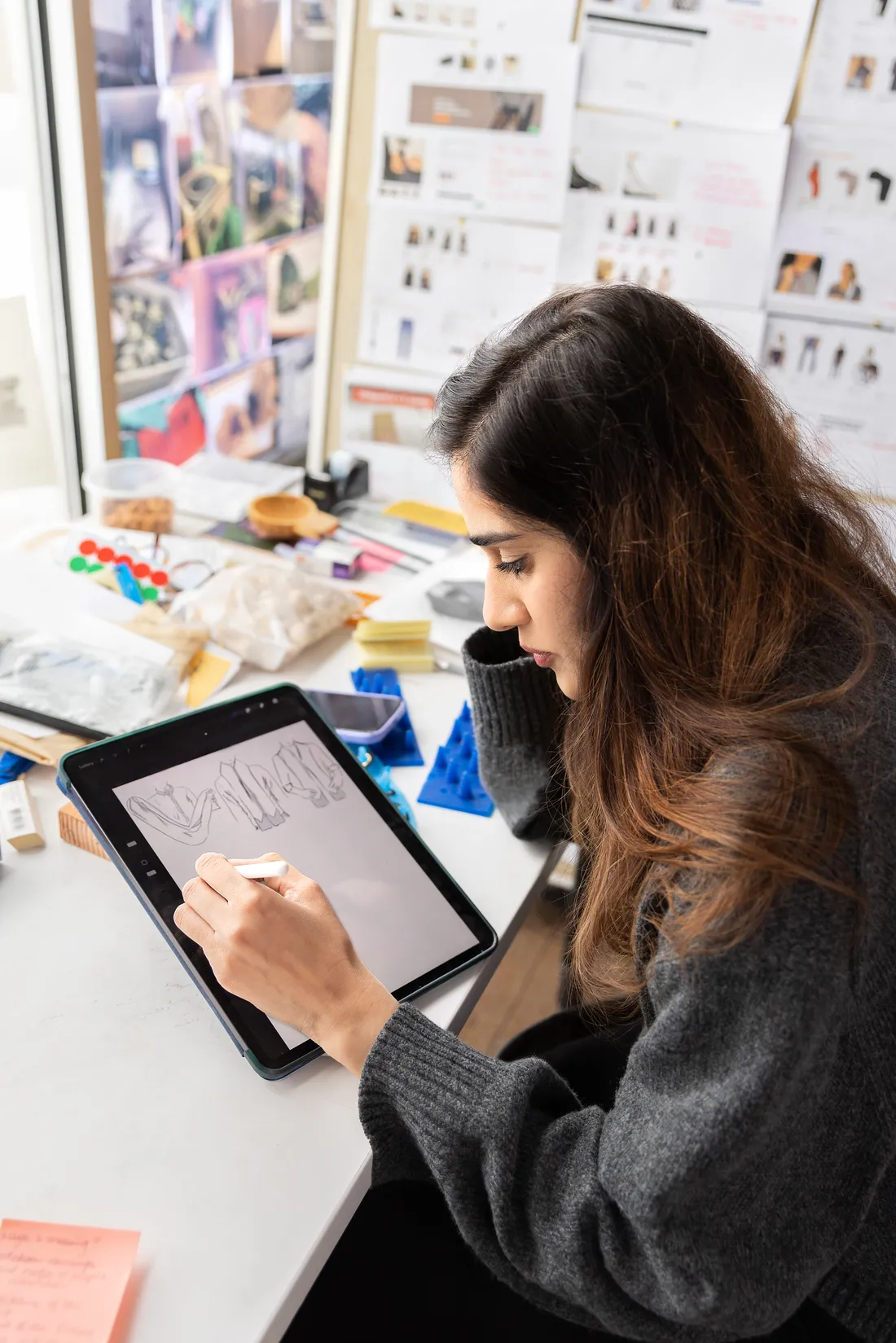
Razzaq sketches images of the scarf. Its modular system design allows wearers to adapt it to different circumstances and how they want to present themselves.
Carr cites the scarf’s level of subtlety and sensory experience as distinguishing characteristics, believing that with continued development “there’s a path to market and she can get investors excited about it.” Along the way, Razzaq has received guidance and mentoring from Zaccai, Hartsock and fashion design professor ChaCha Hudson, an expert on inclusive fashion. Razzaq and Hudson made two trips to New York City, attending an inclusive fashion exhibition and researching fabrics. Hudson also helped her with the scarf’s pattern design, stitching and fabric selection. “Syracuse University has given me incredible exposure to so many disciplines,” Razzaq says. “I want to implement those ideas in my professional field and gather more experience, so I’m fully equipped to go back home to Pakistan and use those experiences.”
Together in Teamwork
A native of Lahore, Pakistan, Razzaq has a background in graphic design, fashion, women’s empowerment activism and teaching. She continues to build her skills—including computer coding—because she wants to incorporate technology into design to improve life for the underserved in Pakistan, including aging populations and those with disabilities. She says a major reason she accepted a Visual and Performing Arts graduate fellowship was the opportunity to work on projects related to people with intellectual disability.
In developing Tailored Relief, Razzaq notes the importance of feedback from Dingel and other InclusiveU students who helped her evolve the design. That aspect of the course’s teamwork can’t be overlooked as it can lead to pivots in design and strengthens relationships and understanding among the participants. And she cites Myers for valuable lessons on disability and for instilling the importance of empathy in the process. “She taught us you never design for people with disability,” Razzaq says, “you design with them.”

